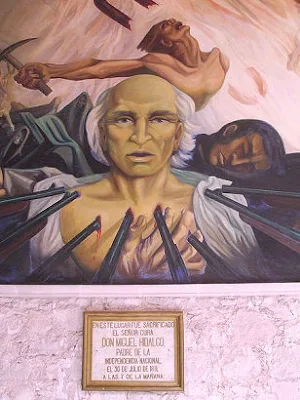Paul Robeson at Welsh National Eisteddfod, Ebbw Vale, 1958
It's the week of the National Eisteddfod here in Wales, so I thought i'd mark the occasion with this post about an individual who has made a lasting positive contribution to our nation,and a contnuing source of inspiration and strength for me Paul Robeson.
Robeson, son of a former slave, was born in Princeton in 1898, just two years after the Supreme Court upheld racial segregation. Robeson grew up during a period of overt racism, confronted by continual racist abuse,but always managed to rise above it and went on to achieve much success at every level of his life.Not only was he an exceptional athlete, cultural scholar, a polyglot who spoke over a dozen languages, actor and singer, he was also a man dedicated to the causes of freedom and social justice, as a fearless political activist he was hounded and persecuted in the U.S for his opinions. His name and historical contribution are still silenced in most textbooks in the U.S.A , where he was was caught up in the midst of the McCarthy witchhunts.
Yet all around the world, especially here in Wales, his voice still carries much resonance, gives us some hope.His first contact with Wales came in 1928, when he was performing in 'Showboat' in the West End. Whilst in his hotel he was attracted by the sound of singing from outside. The singing was coming from unemployed miners who had marched to London to draw attention to the hardship and suffering endured by thousands of mining families in South Wales. He went outside to meet them, listened to their plight, recognised a shared suffering, and a mutual bond was born.Robeson said it was the “first time he felt human dignity” because of the lack of racial prejudice.He was once recorded as saying about Wales: “It was there I first understood the struggles of white and negro together – when I went down into the coal mine in the Rhondda Valley, lived amongst them.”
He joined them on hunger marches in 1927 and 1928, and was to visit Wales many times, performing at Neath, Swansea, Caernarfon and Cardiff in support of causes as varied as the victims of the 1934 disaster at Gresford Colliery, near Wrexham, to the Welsh casualties of the Spanish civil war.In 1938, he sang and addressed a massed audience in the Pavillion, Mountain Ash, at the International Brigade Memorial Service, organised to commemorate the 33 Welshmen who had been killed in the Spanish Civil War.He addressed the audience thus :- 'I am here because I know these brave fellows fought not only because I know these brave fellows fought not only for me but for the freedom of the people of the whole world, I feel itI is my duty to be here.'
In 1940 he starred in the film Proud Valley, set in South Wales, that captured the harsh realities of Welsh coal miners' lives.He starred as a Black American coal miner and singer who gets a job there and joins a male voice choir.In 1950, he had his passport confiscated for eight years when US authorities attempted to stunt his influence at the height of McCarthyism, owing to his alleged un-American activities. Yet, amazingly, he still managed to perform to more than 20,000 Canadians watching from across the border as Robeson sang on US soil..In 1957 Robeson participated in the Miners’ Eisteddfod in Porthcawl by means of a transatlantic telephone link to a secret recording studio in New York, being unable to travel because his passport had been withdrawn by the US Government because of his outspoken left wing and anti-racist views which he used to speak out against injustices.The South Wales miners added their voice to an international petition that eventually forced the US Supreme Court to reinstate his passport in 1958.
On 4th August 1958 this allowed him to attend the National Eisteddfod of Wales in Ebbw Vale,where he was presented with a Welsh hymn book to mark his visit,he sat alongside Aneurin Bevan a long term friend and delivered an address to the people of Wales.Significantly was the first man to be granted permission to speak English on the llwyfan (eisteddfod stage) He spoke of the importance of his Welsh links:"You have shaped my life - I have learned from you.I am part of the working class.Of all the films I have made the one I will preserve is Proud Valley"
He spent the last years of his performing life abroad, but returned to the US when ill-health led to his retirement in 1963 some say exasperated by the persecution he had experienced over the years.
He lived the final years of his life in seclusion in Philadelphia, Pennsylvania, and died there on January 23rd, 1976. He is fondly remembered because he not only stood up for the injustices that African-Americans faced, but also was able to empathize and connect with other people’s struggles, he funded Jews escaping Nazi Germany, spoke out against the fascists in Spanish Civil War, campaigned against colonialism in African countries and stood with laborers in the United States and proudly with the people of Wales, an internationalist who identified with the most important issues of freedom and social justice of his time, and practiced what he preached. Because of all this and his constant solidarity with the Welsh people he remains forever etched in the nations heart. A powerful rich courageous presence in our collective history.Here is his rich voice singing a beautiful English Language version of the Welsh National anthem.
Paul Robeson - Land Of My Fathers
Paul Robeson : Welsh Transatlantic Concert





















